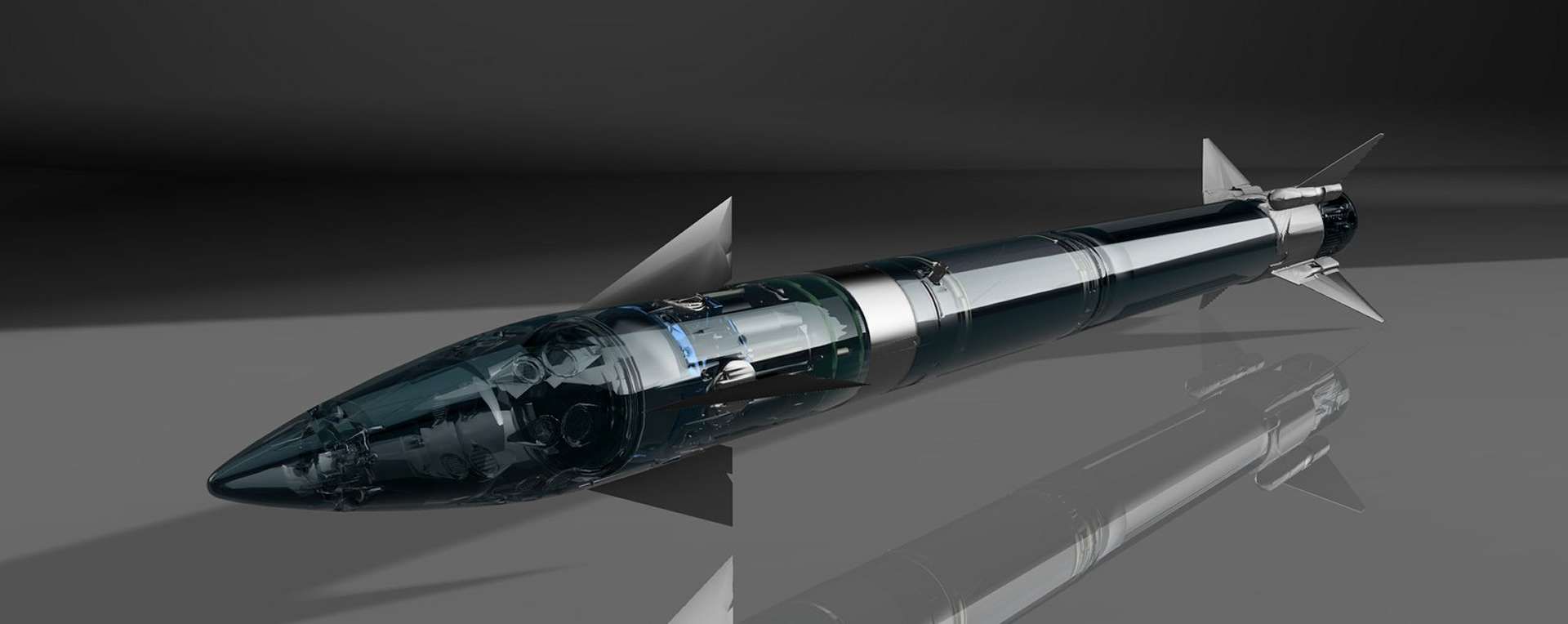Breaking News
UK announces supply of 650 Martlet missiles to Ukraine in new defense package.
On September 6, 2024, the United Kingdom announced a new £162 million air defense package for Ukraine, including the supply of 650 Lightweight Multirole Missiles (LMM). This announcement was made by Defence Secretary John Healey MP during the Ukraine Defence Contact Group (UDCG) meeting at the US Air Force Base in Ramstein, marking his first participation in this capacity. At the 24th meeting of the group, Healey reiterated the UK's commitment to Ukraine and called on international partners to continue providing the necessary equipment for Ukraine's defense efforts.
Follow Army Recognition on Google News at this link

In line with the new government’s aim to expedite the delivery of aid, the first batch of the LMM missiles is also expected to be shipped to Ukraine by the end of the year. (Picture source: Thales Defence)
This decision follows a bilateral meeting in London between Healey and Ukrainian Defence Minister Rustem Umerov, where the two discussed the UK's plans to increase support for Ukraine over the coming months. During the meeting, the Defence Secretary confirmed plans for the delivery of £300 million worth of artillery ammunition to support Ukraine's ongoing military operations by the end of this year. In line with the new government’s aim to expedite the delivery of aid, the first batch of the LMM missiles is also expected to be shipped to Ukraine by the end of the year.
The announced package is part of broader UK efforts to enhance defense production both within the UK and across Europe. The £162 million contract is expected to support future supply chain requirements, with the missiles being produced by Thales at their factory in Belfast. These systems are designed to be versatile and can be deployed from various platforms on land, sea, and air. The funding for this initiative is mainly sourced from the UK's annual £3 billion financial package for Ukraine, supplemented by contributions from Norway through the International Fund for Ukraine (IFU). This move is consistent with the Prime Minister and the Defence Secretary's pledge to provide continued support to Ukraine.
This decision follows the signing of a new Defence Export Support Treaty in July, during President Volodymyr Zelenskyy's visit to Downing Street. The agreement, signed by Healey and Umerov, is intended to strengthen both countries' defense industrial bases and enhance the production of military hardware and weapons. Under the treaty, Ukraine will have access to £3.5 billion in export finance to support its war effort.

The Martlet, or Lightweight Multirole Missile (LMM), was developed by Thales Air Defence under the UK's Future Anti-Surface Guided Weapon (Light) program to enhance its capabilities against small, fast-moving targets. (Picture source: Thales Defence)
Defence Secretary John Healey stated that this commitment aims to strengthen Ukraine's air defenses, emphasizing the new government's focus on accelerating support to Ukraine. He referenced recent Russian missile strikes on Ukrainian cities such as Poltava and Lviv, noting that the provision of these UK-manufactured missiles is intended to help Ukraine protect its people, infrastructure, and territory.
Before his meeting with international partners, Healey visited the Joint Intelligence Coordination Centre (JICC) at the Ramstein Air Base, where UK Armed Forces personnel are collaborating with allies to analyze intelligence. Since the start of Russia's military actions, the UK has provided Ukraine with hundreds of LMM missiles for air defense purposes, which have reportedly been used to counter a range of aerial threats, including drones.
The Martlet, or Lightweight Multirole Missile (LMM), was developed by Thales Air Defence under the UK's Future Anti-Surface Guided Weapon (Light) program to enhance its capabilities against small, fast-moving targets. Initially designed for use by the Royal Navy's AW159 Wildcat helicopters, the missile's development was funded by reallocating budgets from other programs in the early 2010s. The Martlet entered service in 2020 after several delays, and it was first deployed operationally with the UK Carrier Strike Group 21 in 2021. Since then, it has been employed in various scenarios, including training exercises and in combat situations by the Ukrainian Armed Forces in the ongoing conflict with Russia.

Several variants of the Martlet have been developed for different applications, but the standard Lightweight Multirole Missiles (LMM) is intended for air-to-surface, surface-to-air, and surface-to-surface roles. (Picture source: UK MoD)
The Martlet missile is characterized by its lightweight design, weighing 13 kg, and its multi-mode guidance system, which includes laser beam riding and semi-active laser guidance, with a terminal infrared homing capability. It can reach speeds of up to Mach 1.5 and has a range of 8 km. The missile has been tested from multiple platforms, such as helicopters, naval vessels, and unmanned aerial vehicles (UAVs), and has been used against a wide range of targets, including drones, small boats, and lightly armored vehicles. Over 100 test firings have been conducted, demonstrating its functionality in varied operational environments, including littoral zones and against fast-moving targets.
Several variants of the Martlet have been developed for different applications. The standard LMM is intended for air-to-surface, surface-to-air, and surface-to-surface roles. The FreeFall Lightweight Multirole Missile (FFLMM), also known as Fury, is a modified variant developed in collaboration with Textron for the U.S. market, designed as a glide bomb without a rocket motor. This variant uses a semi-active laser guidance system and is intended as a more cost-effective option for specific strike scenarios, such as use by UAVs or direct strikes against time-sensitive targets. The modular nature of the Martlet also allows for potential upgrades, such as different warheads and guidance systems, to suit a range of operational needs.


























